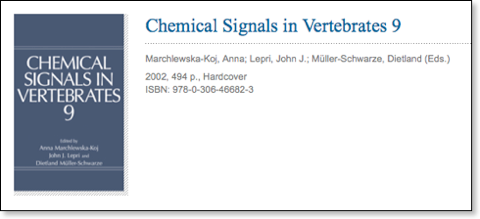MUPs and competitive scent marking

Humphries, R.E., Robertson, D.H.L., Nevison, C.M, Beynon, R.J. & Hurst, J.L. (2001) The role of urinary proteins and volatiles in competitive scent marking among male house mice. . In: Chemical Signals in Vertebrates (Ed. A. Marchlewska-Koj, D. Muller-Schwarze & J. Lepri) pp353-360. Plenum Press, New York.
Major urinary proteins (MUPs) in the urine of male house mice (Mus domesticus) bind a number of male signalling volatiles and slowly release these from urinary scent marks. By fractionating male urine using size-exclusion chromatography, we have shown that it is the protein fraction of the urine that stimulates male competitive counter-marking, while the release of volatile ligands attracts attention to a competitor’s scent marks. We found that males counter-marked the fresh urinary protein scents of intruders but preferred to deposit more of their counter-marks near proteins that had lost most of their ligands through prolonged ageing or through displacement with menadione. However, males were only stimulated to counter-mark in the presence of a fresh or 24 h aged protein stimulus. 7-day-aged proteins did not stimulate any counter-marking responses when presented in the absence of fresh intruder stimuli, although these were detected and investigated. It appears that males deposit scent marks strategically to provide the most advantageous competitive signal in the face of scent mark challenges from other males, and thus communicate their superior competitive ability to females and to other male competitors.